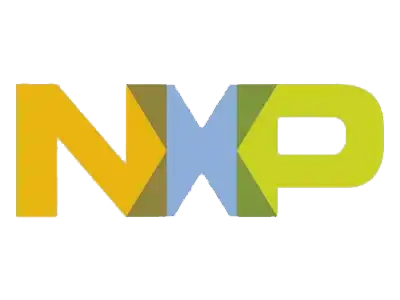Introduction
In today’s rapidly evolving world of technology, users expect mobile and web applications to be fast, easy to use, and visually engaging. Whether it’s a SaaS ecommerce platform, business site, or a mobile-friendly website, the user interface (UI) and user experience (UX) shape how your brand and product are perceived.
A clean architecture in frontend development is what makes every seamless interaction and clean design possible. These frontend frameworks are crucial in deciding how an application look and feel. They also help in developing applications that are interactive and impact speed, maintenance and scalability.
Selecting the right frontend framework is more than just a technical decision; it’s a strategic call. The right framework can improve performance, shorten development cycles, and deliver a consistent experience across devices. The wrong one can slow down the performance of an application, generate vital challenges in maintaining the code, and hold back multiple scalability issues, such as technical, operational, experience and market scalability issues.
In this blog, we’ll break down what frontend frameworks are, why they’re important, and how to pick the one that best fits your project based on the real-world criteria.
What Is a Frontend Framework?
A frontend framework is a toolkit of pre-written code, components, and design patterns that most of the developers use to create visual and interactive sections of an application or website. It simplifies the development process and makes it easier to create interfaces that are responsive, scalable, and consistent. Some popular frameworks like React, Angular, and Vue.js are known for their features such as component-based architecture, routing, and real-time data handling. All of these features are critical for delivering modern web experiences.
As businesses shift through digital transformation, particularly when migrating applications to the cloud, selecting the right frontend framework becomes a strategic decision. Many organizations work with cloud migration consulting services or partner with specialized providers to ensure that their frontend technology aligns with broader performance, scalability, and security goals. Leading consulting firms often combine migration expertise with security best practices, helping companies integrate frontend frameworks seamlessly into cloud infrastructure, ultimately enabling them to deliver applications that are fast, secure, and ready for the future.
Key Considerations When Choosing a Framework
Sometimes, choosing the right frontend framework is not just about picking the popular ones, but knowing how the framework impacts on the performance of application, scalability and adaptability over time.
What are the Crucial Factors to Consider when Choosing a Framework?
- Team’s skillset
- The complexity of the application
- Long-term maintenance
- Available community support
What are Some Framework Examples?
All of the above factors play a key role in the decision to select the right frontend framework. For example, React is known for its flexibility and large ecosystem, while Angular is popular for its structured, opinionated approach. The type of framework you choose becomes even more critical if your application requires fast rendering, real-time updates, or cross-platform functionality.
From a business and infrastructure point of view, this decision often ties into larger digital transformation initiatives like cloud migration. The aim isn’t just to build visually appealing apps, but to create cloud-optimized, secure, and future-ready digital experiences.
Top Frameworks to Know (with Pros & Cons)
Here are some of the top frameworks to consider as we move toward 2026, especially if a business is planning digital modernization or partnering with cloud migration consulting services.
1. React.js
Created by: Meta (Facebook)
Type: Component-based library (Used like a framework)
Pros:
- It is mature and widely used across various industries
- Large ecosystem with tools like Redux, React Native, and Next.js
- Its virtual DOM (Document Object Model) enables efficient rendering
- Extremely flexible, making it suitable for both startups and enterprises
- Trusted by many cloud migration services companies for cross-platform projects
Cons:
- Requires third-party libraries to cover a complete set of features
- JSX syntax can feel awkward to new developers
2. Angular
Created by: Google
Type: Full-fledged MVC framework
Pros
- Excellent for large-scale enterprise applications
- Includes built-in tools for routing, forms, HTTP requests, and state management
- Strong TypeScript support
- Fits well with cloud migration and security consulting projects that need structured architectures
Cons
- Larger bundle sizes compared to other frameworks
- Steeper learning curve for beginners
3. Vue.js
Created by: Evan You
Type: Progressive framework
Pros
- Lightweight and beginner-friendly
- Offers two-way binding and a reactive data system
- Backed by strong documentation and an active community
- Great choice for MVPs or projects with short time-to-market requirements
Cons
- Less adoption within large enterprises (so far)
- Smaller plugin ecosystem than React or Angular
4. Svelte
Created by: Rich Harris
Type: Compiler-based framework
Pros
- Compiles away the need for a virtual DOM, resulting in faster performance
- Clean syntax with minimal boilerplate code
- Produces very small bundle sizes, ideal for performance-sensitive apps
Cons
- Smaller community and ecosystem compared to mainstream frameworks
- Still lacks widespread adoption in enterprise environments
5. Next.js (React-based full-stack framework)
Created by: Vercel
Pros
- Supports hybrid static generation and server-side rendering
- Comes with built-in features like routing, API routes, and image optimization
- Excellent for SEO-driven applications
- Integrates smoothly with cloud platforms such as AWS, Azure, and Vercel — making it a strong choice for cloud migration projects
Cons
- Tied to React, so it’s not framework-agnostic
- Can become complex at scale if the team lacks experience
Looking Ahead to 2026
The frontend ecosystem is moving steadily toward deeper integration with cloud-native platforms, serverless architectures, and real-time experiences. New frameworks like Qwik and SolidJS are gaining traction with performance-focused approaches. For businesses modernizing legacy systems, staying agile and experimenting with emerging tools, often in collaboration with cloud migration service providers, will be key to staying ahead.











